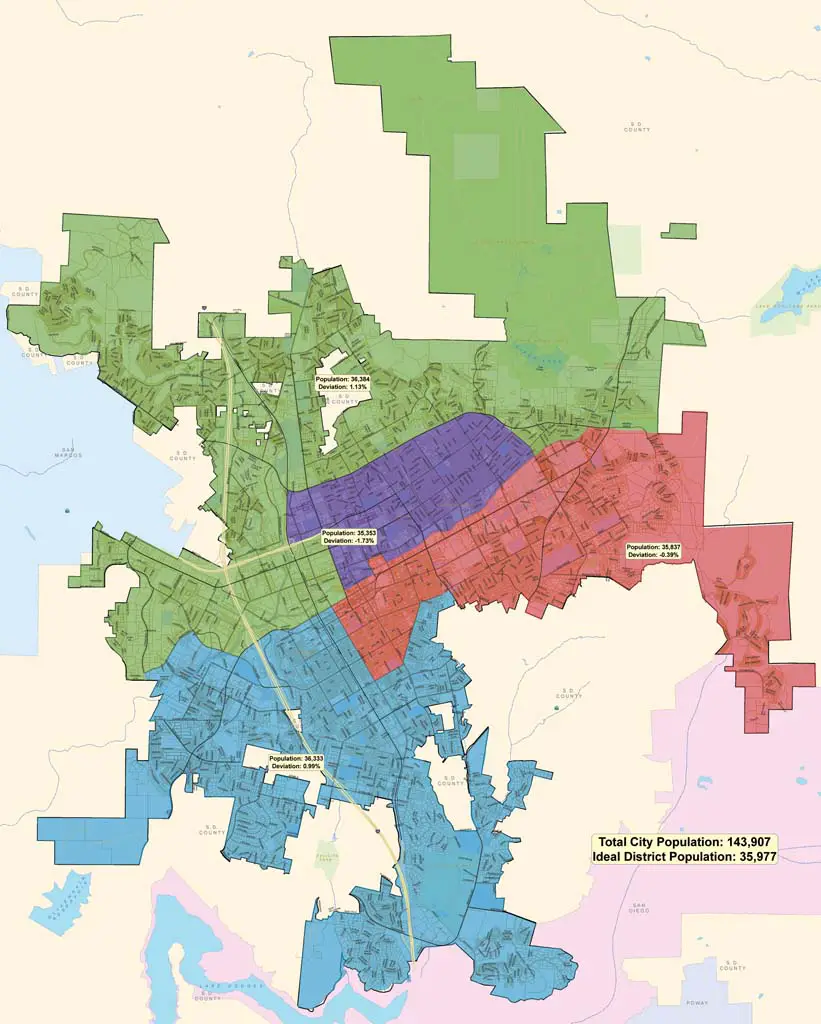ESCONDIDO — Complying with a lawsuit settlement, City Council approved the proposed city boundaries for four voting districts used to elect councilmembers.
The lawsuit against the city, settled in March, alleged that the city’s at-large elections discriminated against Latinos, who make up the majority of the city’s population.
With the voting districts, one councilmember will be elected from each district, and the mayor will be elected by a citywide vote.
The intention is that it will be easier for candidates to be elected because they will only have to campaign within their districts.
In this way, candidates will have to appeal to community interests, including the interests of Latinos, to garner support and consequently those interests will gain representation on the council.
An independent districting commission mapped out the boundaries based on community feedback collected over the past few months and presented the boundaries for approval at the Dec. 4 meeting.
In accordance with voting laws, the districts were created to cover a contiguous geographic area, contain an equal number of residents, and group together residents with shared community interests.
Each of the four districts contain about 36,000 residents, one fourth of the city’s total population of 143,907 residents.
The majority of eligible votes in the central district that covers most of the city’s urban downtown area are Latinos.
That district is considered most likely to produce a Latino candidate.
The three other districts cover the northern, southwestern and southeastern portions of the city.
The boundaries were established in a way that none of the four current councilmembers live in the same district, though that was not a requirement.
Four of the councilmembers, except for Deputy Mayor Olga Diaz, voiced opposition to the city’s obligation to create the districts in the first place.
But they unanimously approved the proposed boundaries brought forth by the commission.
The boundaries were approved in time to be used in the elections next November. Councilmembers John Masson and Ed Gallo will be up for re-election and Diaz has expressed her interest in running for mayor.
Independent Districting Commission Chair Dana Nuesca said that in the beginning, the commission had to convey to the public that they were not there to solve city problems. Instead they had to focus on following strict voting laws and work to incorporate community feedback.
She said that ultimately she was very happy to see the process of creating the voting districts work effectively.
Vice Chair of the Independent Districting Commission John Valdez expressed that now that the voting districts are established, the residents need to work on getting the community engaged for the next election.
“This is just the beginning, and now the real work begins,” he said.

